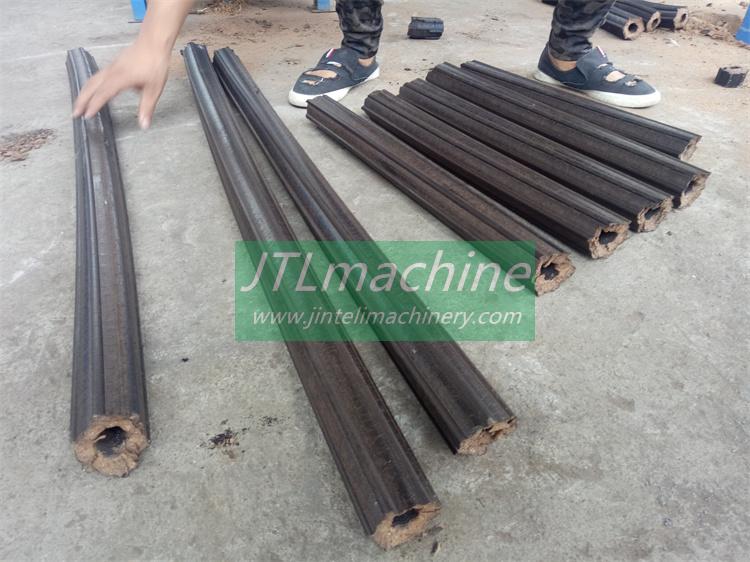Table of Contents
Maximizing Efficiency: How to Choose the Right coal dust briquette machine for Your Business
In the realm of sustainable energy solutions, coal dust briquette machines, sawdust charcoal machines, and waste wood biomass briquette machines have emerged as essential tools for businesses looking to maximize efficiency while reducing environmental impact. These machines offer a means to convert various types of waste materials into valuable fuel sources, contributing to both cost savings and eco-friendly practices. However, with a plethora of options available in the market, choosing the right briquette machine for your business can be a daunting task. To navigate this decision effectively, it’s crucial to consider several key factors that influence performance, productivity, and overall suitability. First and foremost, one must assess the specific needs and requirements of their business. Different industries generate varying types and quantities of waste materials, ranging from coal dust and sawdust to agricultural residues and biomass. Understanding the composition and volume of the raw materials available is essential in selecting a briquette machine that can efficiently process them. For instance, if your business primarily deals with sawdust or wood chips, opting for a sawdust charcoal machine optimized for handling such materials would be prudent. Additionally, it’s essential to evaluate the production capacity and output of the briquette machine. The throughput capacity of these machines can vary significantly, ranging from small-scale units suitable for startups to large industrial-grade systems capable of handling high volumes of raw material. Assessing your business’s production requirements and anticipated growth trajectory will help determine the appropriate size and capacity of the briquette machine to invest in, ensuring optimal performance and scalability. Another critical consideration is the efficiency and reliability of the briquetting process. Look for machines equipped with advanced features such as automatic temperature control, adjustable pressure systems, and robust construction materials that enhance durability and minimize downtime. Investing in a high-quality briquette machine not only ensures consistent output quality but also reduces maintenance costs and prolongs the machine’s lifespan, ultimately maximizing long-term efficiency and profitability. Furthermore, it’s essential to consider the end-use applications and market demand for the briquettes produced. Different industries require briquettes with specific characteristics, such as size, shape, and calorific value. Understanding your target market and their preferences will guide the selection of a briquette machine that can produce customized products tailored to meet consumer demands effectively. Additionally, exploring potential partnerships or distribution channels can help identify lucrative market opportunities and drive demand for your briquette products. In addition to performance and productivity considerations, it’s crucial to factor in the environmental implications of briquette production. Opting for sustainable and renewable raw materials, such as waste wood biomass or agricultural residues, aligns with eco-friendly practices and reduces carbon emissions associated with traditional fuel sources. Moreover, investing in energy-efficient briquette machines equipped with emission control technologies can further minimize environmental impact and enhance the overall sustainability of your business operations. In conclusion, choosing the right coal dust briquette machine for your business requires careful evaluation of various factors, including raw material composition, production capacity, efficiency, end-use applications, and environmental considerations. By conducting thorough research and leveraging expert guidance, businesses can select a briquette machine that not only meets their immediate needs but also positions them for long-term success in the burgeoning market for sustainable energy solutions.Sustainable Solutions: Transforming Waste Wood into Biomass Briquettes with Sawdust Charcoal Machine
In the pursuit of sustainable solutions to combat environmental challenges, innovative technologies have emerged to transform waste wood into valuable resources. Among these, the coal dust briquette machine and sawdust charcoal machine stand out as efficient tools for converting biomass waste into usable briquettes. These machines offer a promising avenue for reducing waste, lowering carbon emissions, and mitigating deforestation. At the heart of this transformative process lies the waste wood biomass briquette machine. This ingenious device operates by compressing raw materials such as sawdust, wood chips, and agricultural residues into compact briquettes without the need for additional binders or adhesives. The result is a clean-burning fuel source that can be used in various applications, from industrial furnaces to household cooking stoves. One of the primary benefits of utilizing a coal dust briquette machine or a sawdust charcoal machine is the reduction of waste accumulation. By repurposing wood waste that would otherwise end up in landfills or incinerators, these machines help alleviate the strain on waste management systems and minimize environmental pollution. Furthermore, the production of biomass briquettes offers an economically viable solution for industries and communities looking to diversify their energy sources. In addition to waste reduction, biomass briquettes contribute to the fight against climate change by serving as a renewable alternative to traditional fossil fuels. Unlike coal or petroleum-based products, biomass briquettes are carbon-neutral, meaning they release only as much carbon dioxide during combustion as the plants absorbed during their growth. This closed carbon cycle helps mitigate greenhouse gas emissions and supports efforts to transition towards a low-carbon economy. Moreover, the use of sawdust charcoal machines and similar technologies promotes sustainable forestry practices by reducing the demand for virgin timber. By utilizing waste wood as a feedstock, these machines help preserve natural ecosystems and biodiversity while simultaneously supporting the circular economy. This approach aligns with global initiatives aimed at promoting responsible resource management and achieving long-term environmental sustainability. Furthermore, biomass briquettes offer practical advantages over traditional firewood, such as higher energy density, consistent quality, and cleaner combustion. This makes them an attractive option for both industrial and domestic consumers seeking reliable and environmentally friendly fuel sources. Additionally, the compact and uniform shape of briquettes facilitates handling, storage, and transportation, further enhancing their appeal in various markets.
Transitioning to a biomass-based economy requires concerted efforts from policymakers, businesses, and communities to invest in renewable technologies and foster a culture of sustainability. Governments can incentivize the adoption of coal dust briquette machines and sawdust charcoal machines through tax incentives, subsidies, and regulatory support. Meanwhile, industries can explore partnerships and collaborations to scale up production and optimize supply chains for biomass briquettes.
In conclusion, the utilization of waste wood biomass briquette machines represents a significant step towards achieving a more sustainable and circular economy. By harnessing the power of technology to convert biomass waste into valuable resources, we can address pressing environmental challenges while unlocking new economic opportunities. As we strive to build a greener future, investing in innovative solutions like coal dust briquette machines and sawdust charcoal machines will play a crucial role in shaping a more resilient and prosperous society.
Furthermore, biomass briquettes offer practical advantages over traditional firewood, such as higher energy density, consistent quality, and cleaner combustion. This makes them an attractive option for both industrial and domestic consumers seeking reliable and environmentally friendly fuel sources. Additionally, the compact and uniform shape of briquettes facilitates handling, storage, and transportation, further enhancing their appeal in various markets.
Transitioning to a biomass-based economy requires concerted efforts from policymakers, businesses, and communities to invest in renewable technologies and foster a culture of sustainability. Governments can incentivize the adoption of coal dust briquette machines and sawdust charcoal machines through tax incentives, subsidies, and regulatory support. Meanwhile, industries can explore partnerships and collaborations to scale up production and optimize supply chains for biomass briquettes.
In conclusion, the utilization of waste wood biomass briquette machines represents a significant step towards achieving a more sustainable and circular economy. By harnessing the power of technology to convert biomass waste into valuable resources, we can address pressing environmental challenges while unlocking new economic opportunities. As we strive to build a greener future, investing in innovative solutions like coal dust briquette machines and sawdust charcoal machines will play a crucial role in shaping a more resilient and prosperous society.





